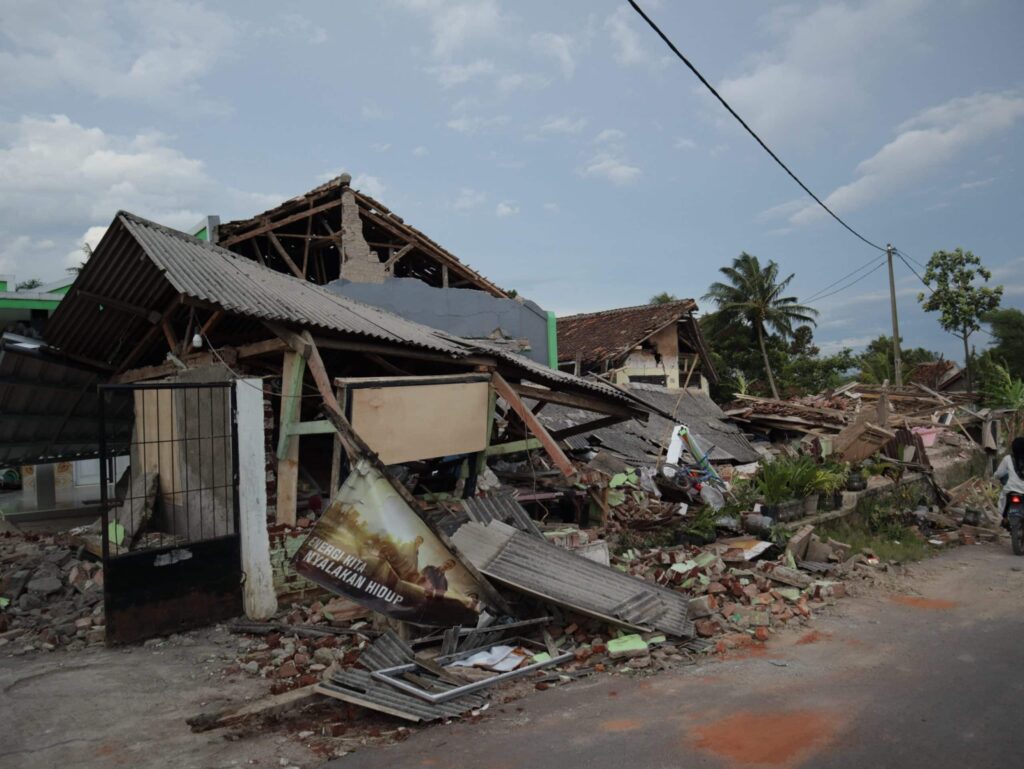Deadly Earthquake in Indonesia Prompts ADRA to Action
Humanitarian organization prepares for relief efforts for severely impacted districts.
November 24, 2022 | Edward Rodriguez, Southern Asia-Pacific Division
More than 270 people were killed and more than 60,000 displaced by a magnitude 5.6 earthquake that rocked the earthquake-prone nation of Indonesia on November 21, 2022. According to local authorities, the earthquake’s epicenter was situated around 47 miles (75 km) southeast of Jakarta, the capital of Indonesia, close to Cianjur town in West Java.
The quake, which occurred at a shallow depth of six miles (10 km), is still being investigated by officials to establish the full extent of its devastation. More than 25 aftershocks were detected by Indonesia’s Meteorology, Climatology, and Geophysical Agency (BMKG). Local authorities claim that a fault in the north Cimandiri fault line that has not yet been documented caused this shallow earthquake.

[Photo courtesy of ADRA Indonesia]
Since the aftershock, people are reluctant to stay in their damaged homes. Numerous locations experienced landslides, cutting off partial access to Cianjur. The number of severely, moderately, and slightly damaged homes is still being verified by local authorities. Several government buildings, places of worship, and schools suffered damage due to this natural calamity. Downed electricity and communication connections are making communication efforts difficult.
Government officials have already established communal tents and open kitchens for displaced families in the areas surrounding the city. Subdistricts that are affected are yet to form evacuation sites for displaced families. Some affected families opted to build make-shift tents in public areas or close to their damaged homes using tarpaulins.
Data was gathered by ADRA from local churches, NGOs, WhatsApp groups run by the government, and online meetings, including ones with the logistic cluster headed by the country’s National Agency for Disaster Countermeasure (BNPB). ADRA personnel from Jakarta were dispatched to examine the situation and identify greatly impacted households that are most at risk. ADRA Indonesia is preparing to distribute shelter kits as an initial response to affected districts.
“ADRA is already on the ground, working with the local government, other trusted partners, and churches to quickly assess the situation,” ADRA International senior emergency program manager Elizabeth Tomenko said. “ADRA emergency response teams are deployed to the hardest hit areas to identify and assist vulnerable families and individuals. Our country office will begin distributing shelter kits so that community members can construct or improve emergency tents near their homes. ADRA also plans to launch a safety and security education campaign to inform families about the risks of aftershocks and landslides,” she said.
Rancagoong village in the Cilau sub-district, Limbagansari village in the Cianjur sub-district, and Cijedil village in the Cugenang sub-district are the most impacted places.
More tents, heavy machinery to clear the road of landslides, generators for electricity, bedding kits, shelter kits, and gasoline are currently being requested by the local government of Cianjur. ADRA Indonesia is preparing to provide kits to help impacted households construct or upgrade the emergency tents they currently have close to their homes. Assessments show that displaced families need shelter kits for family tents, bedding, public kitchens, gensets, health facilities, and physicians.
The original version of this story was posted on the Southern Asia-Pacific Division news site.